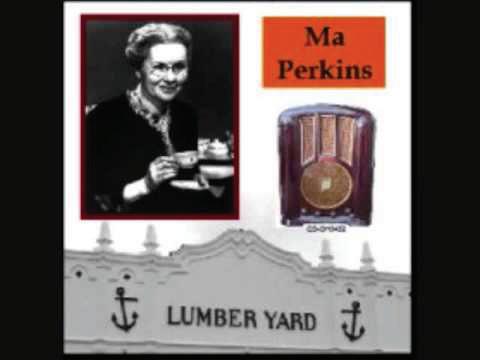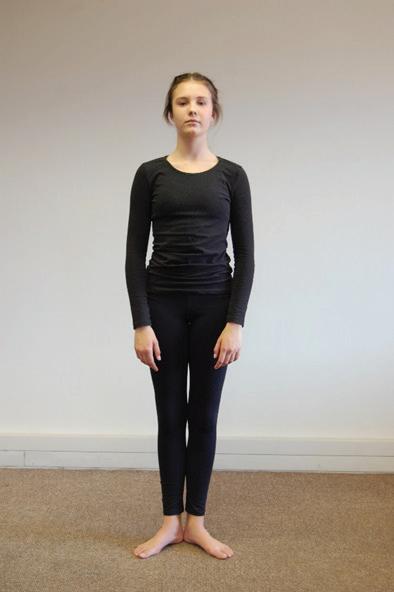
10 minute read
Lesson 1.1: Performance skills development
Lesson 1.1: Performance skills development
Introduction
In this lesson we focus on how to warm up the voice and body before a performance. You have to prepare and condition your body to make sure it performs at its peak. Warm-up exercises may help to reduce injuries and help actors to focus and prepare for the task ahead. Warm up with your fellow actors to strengthen your bond and improve communication.
Cool-down exercises will help to recharge your body and voice. It releases tension and helps you to return to a state of calm following the heightened emotions associated with performing.
This lesson should take 15 minutes but must be repeated every week and especially before performances.
PREPARING FOR A PERFORMANCE
Warm-up exercises
Neutral posture: An actor usually begins in the neutral position when doing drama exercises. In this position, the body and muscles are completely relaxed. The neutral position also refers to body alignment and how the head, shoulders, spine, hips, knees and ankles relate and line up. Proper body alignment puts less stress on the spine and builds good posture. Everyone has certainphysicalrestrictions(i.e.,flatfeet,weight,ashortorlongneck,etc.)thatdeterminehow effectivelytheyfindtheirneutralposition.

Fig. 1.1: Neutral position 1
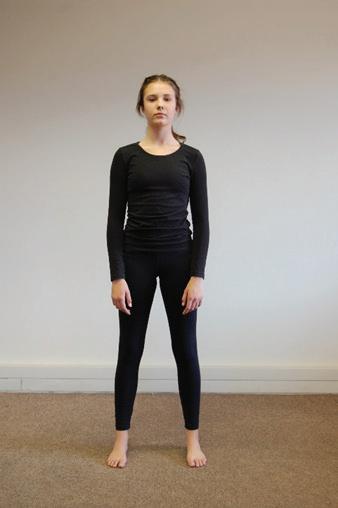
Fig. 1.2: Neutral position 2 – Feet are further apart
Start at the bottom and work your way upwards to build a good neutral posture:
y Feet: Stand with your feet slightly apart, directly below your hips and parallel to each other. y Knees: Push your knees back, lock them and then bend them slightly forward. y Pelvis: Keep your pelvis relaxed and aligned with your feet; don’t push your hips forward or rounded back. y Chest: Keep your chest directly above your hips without pushing it out or pinching it in. This position is very important for breathing exercises. y Shoulders: Your shoulders should be relaxed and slightly dropped. Do not pull your shoulders back or push them forward. y Arms: Your arms should hang relaxed and free at your sides. Your hands should also be relaxed,withyourfingersslightlycurvedandnotstretchedoutorclenchedinafist. y Head: Imagine your spine getting longer at the back of your neck, pushing your head upwards. y Face: Look straight ahead and lift your chin slightly (this happens naturally when you relax your shoulders). Don’t push out or pull back your chin. Keep your expression neutral (this will be discussed in detail in the section dealing with vocal warm-up exercises).
You are now ready to start basic body warm-up exercises.
Visit//bit.ly/2GQtDxv,bit.ly/2HUyiQkandbit.ly/2owfkHOformoreinformationonphysical warm-up exercises for actors.
Physical development
Warm-up exercise 1: Body focus exercises
Neck rolls
y Stand in the neutral position. y Lower your chin onto your chest. y Roll your head to the right so your ear is directly above your shoulder. y Roll your head back onto your chest and then rotate your head to the left. y Repeatfivetimes.
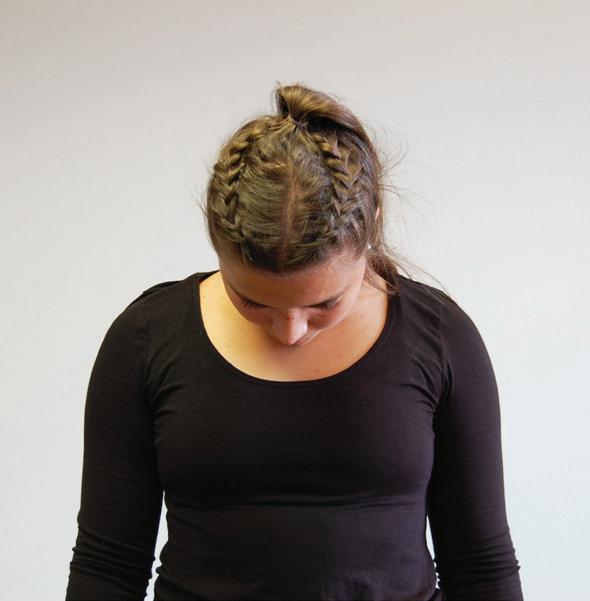
Fig. 1.3

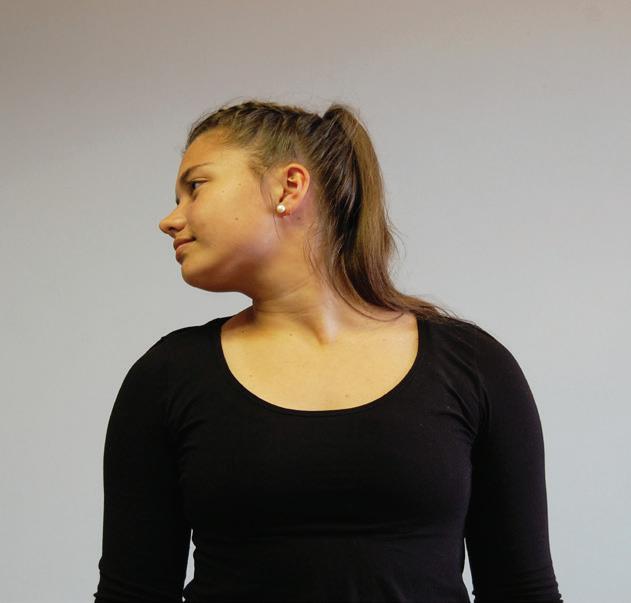
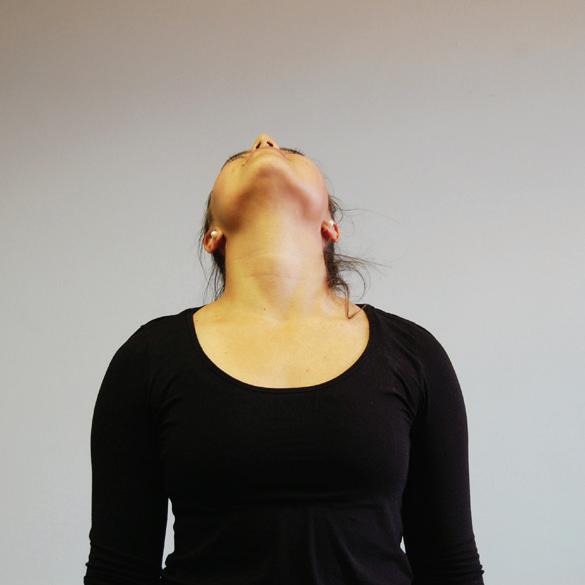
Fig. 1.4

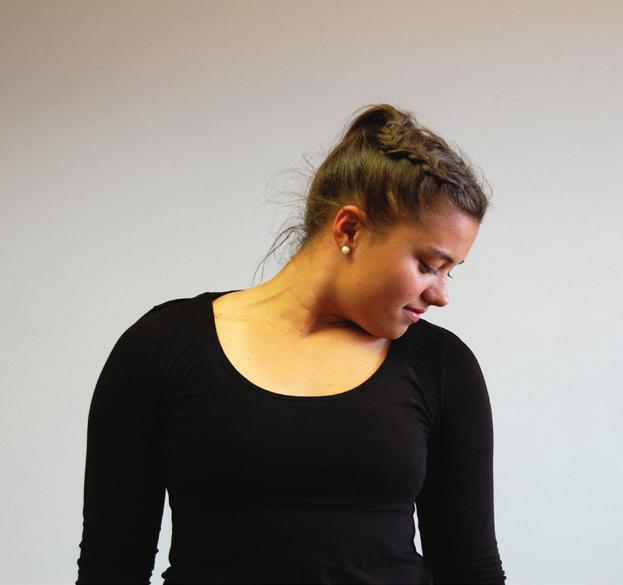
Shoulder rolls
y Stand in the neutral position. y Rollyourrightshouldertotheback–repeatfivetimes. y Do the same with your left shoulder. y Repeat this exercise, but roll your shoulders to the front. y Lift your shoulders and try to touch your ears. Hold this position for a few seconds and relax.
Arm stretches
y Stand in the neutral position. y Stretch your right arm out above your head and lean towards your left. Keep your arm stretched out over to the left; stretch as far as you can. Hold this position for a few seconds. y Repeat on the other side. y Repeatfivetimes. 14
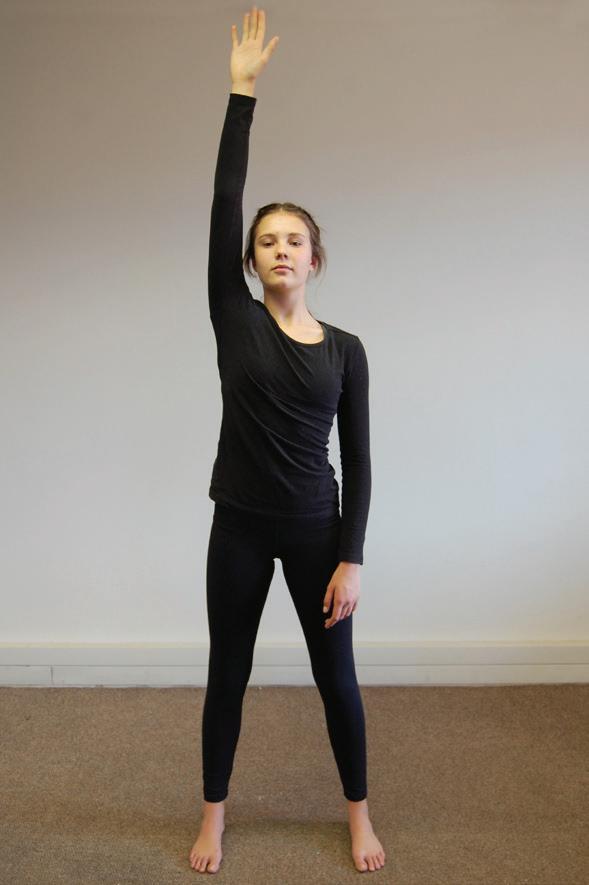
Fig. 1.5
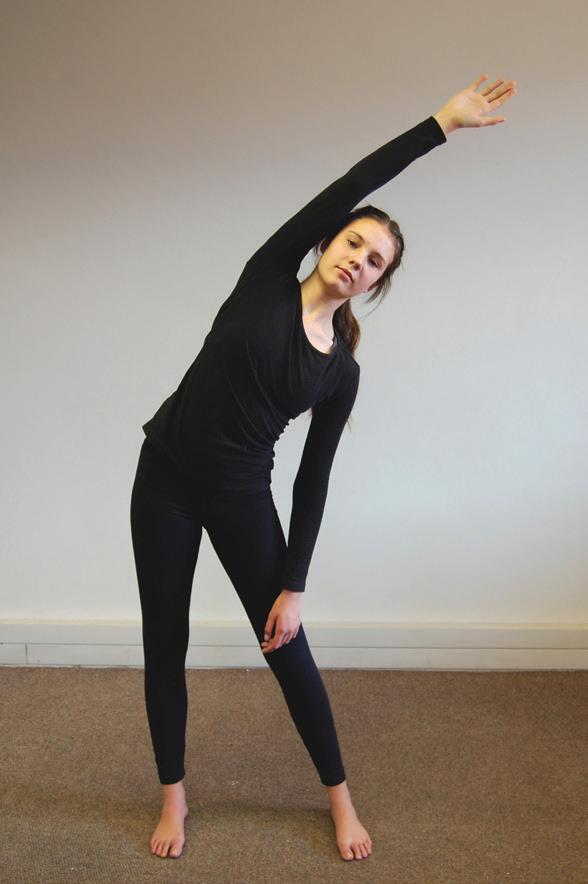
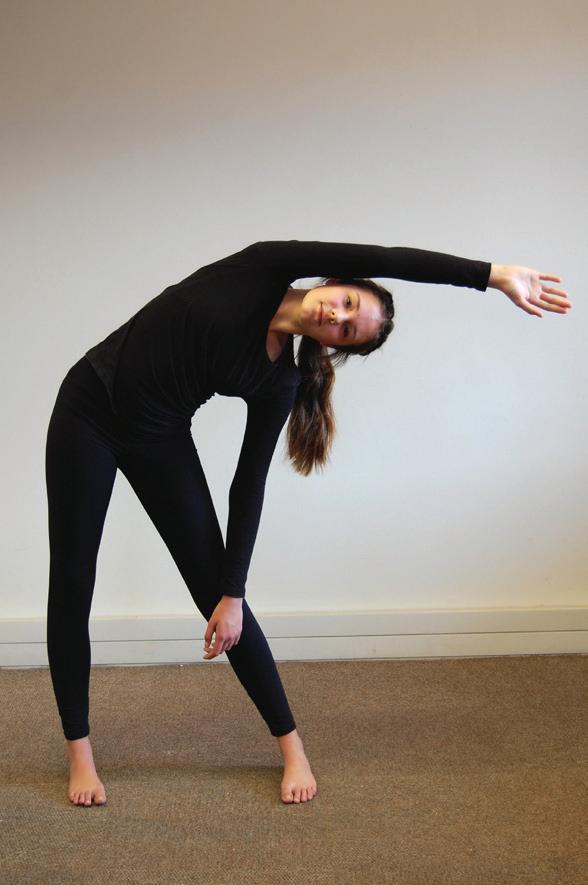
Hip rolls
y Stand in the neutral position and place your hands on your hips. y Move your hips in a circular motion, as if you are hula-hooping. y Now move your hips in the opposite direction. y Repeattheexercisefivetimes,inbothdirections.
Leg shakes
y Stand in the neutral position and lift your right leg. y Shake your leg. y Repeat with your left leg. y Repeatfivetimesoneachsideoruntilyoufeelenergised.
Spine rolls
y Stand in the neutral position and lower your chin onto your chest. y Relax your shoulders and start rolling towards the ground, as though you are going to touch your toes. Exhale when you have rolled down as far as you can. y Bend your knees and let your head and arms hang loose. Relax. y As you roll back up to a standing position, inhale. Once you are in the neutral position again, exhale. y Repeatfourorfivetimes.
Body buzz
y Stand in the neutral position. y Start shaking your body as though you are experiencing an electric shock. y Keep this up for ten seconds and then freeze. y Repeat two or three times. y After this exercise, you should feel energised and invigorated.
Warm-up exercise 2: Body focus exercises
Release and receive
y Stand in the neutral position, facing a wall. y Imagine you are gathering your energy in an invisible ball. y Hold your hands in front of your chest, imagining you are holding the invisible ball. y When it feels too intense, release the energy and throw the ball against the wall. y Prepare to receive the bouncing ball back. Lean back to catch it. y Throw it back to the wall. Repeat a few times. Focus your energy on the ball, as well as on the release and receive action.
Vocal development
The body’s vocal resonators are the mouth, nose, throat and chest. Vocal resonators amplify and enhance the sounds made by our breath and vocal chords.
The articulators include the teeth, tongue, lips, jaw and the roof of the mouth. Sounds are articulatedbythesebodypartswhichinfluencesourpronunciationandvocalisation.

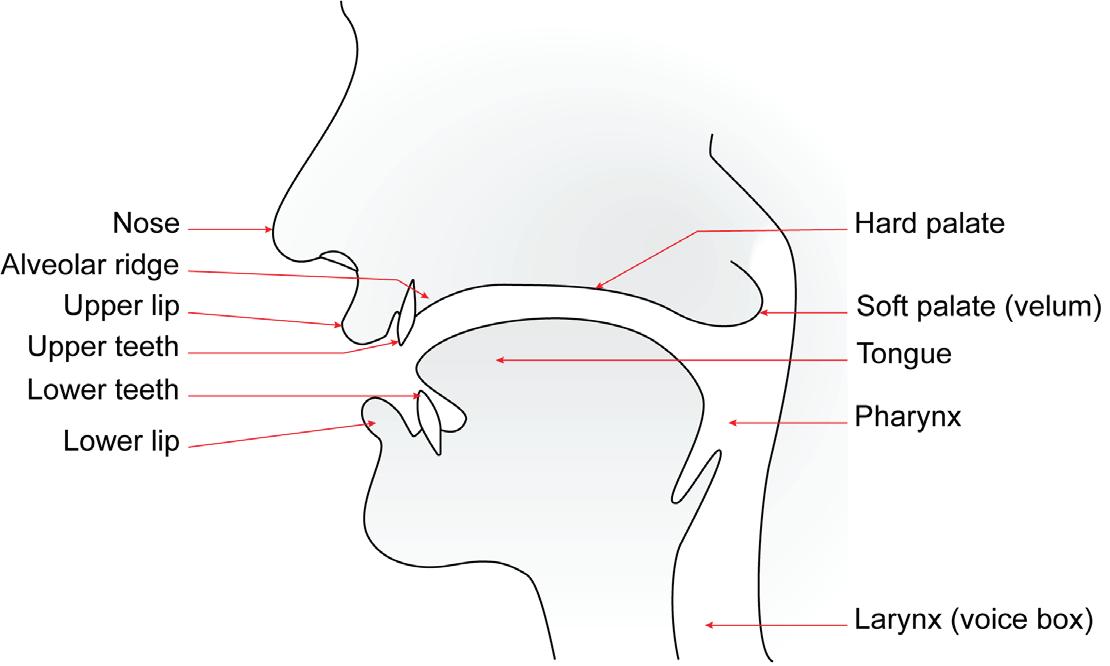
Fig. 1.6: The resonators Fig. 1.7: The articulators
Warm-up exercise 1: Breathing exercise
y Stand in the neutral position. y Take a deep breath and raise your shoulders. y Drop your shoulders and exhale. y Repeat five times. Focus on your breathing. Inhale deeper at each go and drop your shoulders even lower. y You will feel your body relaxing.
Warm-up exercise 2: Scrunch and stretch
y Stand in the neutral position. y Scrunch up your face, like you have eaten something sour. y Focus on getting your face as small possible and hold the pose for ten seconds. y Now open your mouth as wide as possible, lift your eyebrows and open your eyes as wide as you can. Keep this pose for ten seconds and then relax your face. y Repeatfivetimes. y Repeat this exercise, but add a soft humming sound when contracting your face and let your voice explode into a loud ‘mah’ when opening your mouth. y Repeatfivetimes. 16
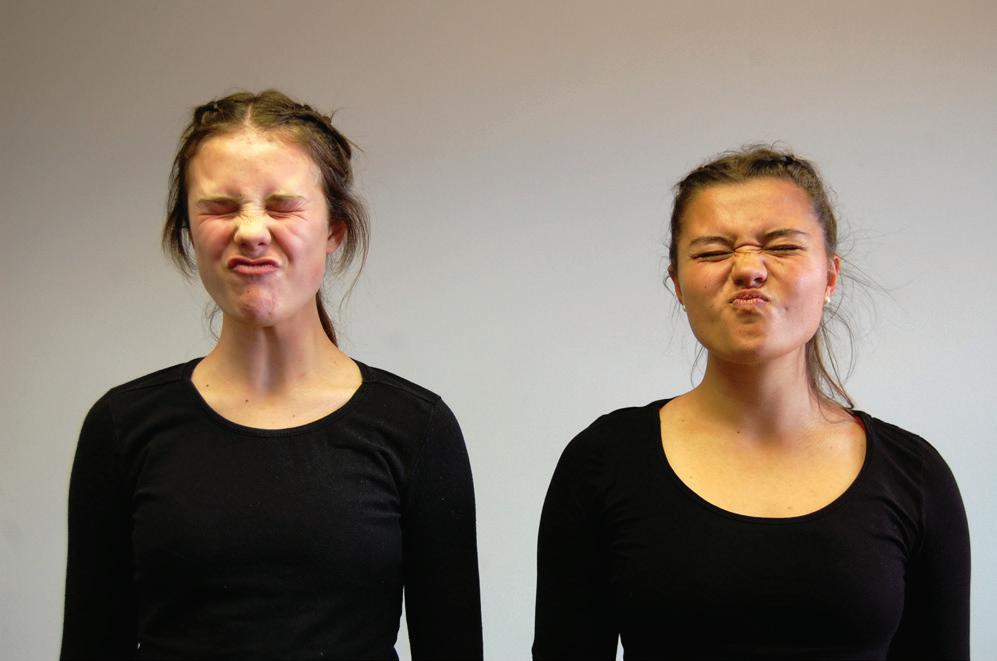
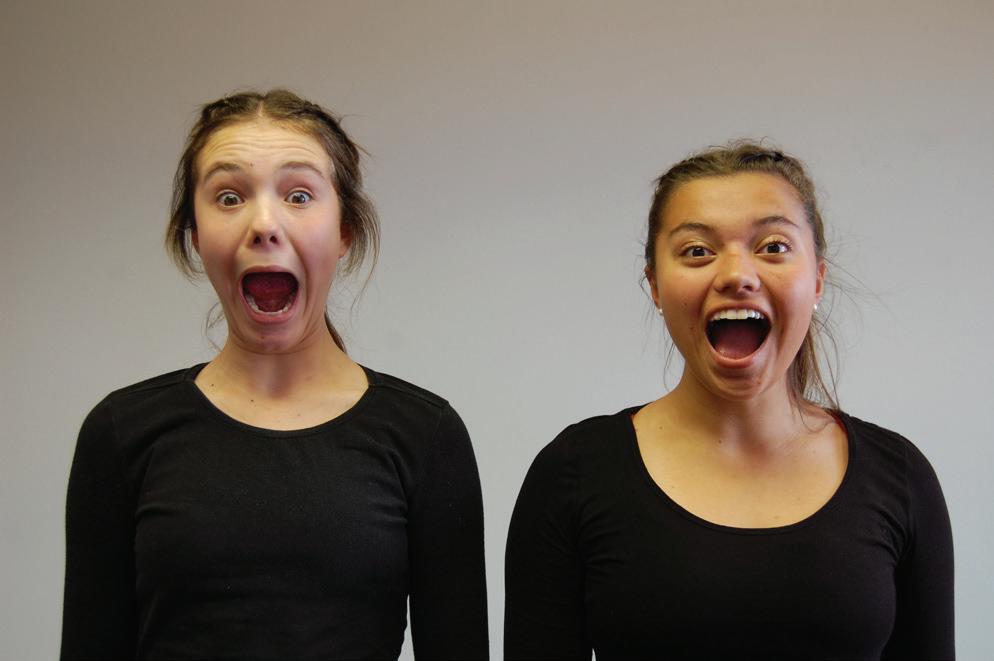
Fig. 1.8
Warm-up exercise 3: Counting
y Stand in the neutral position. y Inhale and exhale gently and become aware of your breathing. y Once you feel focused, breathe in deeply and count aloud from one to ten as you exhale, making sure your pitch and volume remain the same. y Repeatfivetimes.
Warm-up exercise 4: Humming
y Stand in the neutral position and think of a song. y Inhale and exhale until you are ready to start humming. y Start humming the song. Do not pronounce the words. y You should become aware of a buzzing sensation. y Repeat the above, but this time, hum more loudly. y Remember to breathe.
Warm-up exercise 5: Tongue-twisters
y Find and memorise a few tongue-twisters. y Stand in the neutral position. y Inhale and prepare to start speaking in a controlled voice. Try to keep your volume and pitch consistent. y Repeat the same tongue-twister a few times.
A few examples of tongue-twisters:
ష She stood on the balcony, inexplicably mimicking him hiccupping, and amicably welcoming him home. ష Amidstthemistsandfiercestfrosts, With barest wrists and stoutest boasts,
Hethrustshisfistsagainstthepost, And still insists he sees the ghosts. ష Lesser leather never weathered lesser wetter weather.
Visit bit.ly/1E5IbFg, bit.ly/1RuBfYs, bit.ly/2GQusX7 and bit.ly/2FfomlU for more information on vocal and breathing warm-up exercises.
AFTER A PERFORMANCE
Release tension and allow your body and voice to cool and calm down.
Cool-down exercise 1: Untying
y Stand in the neutral position and lower your chin onto your chest. y Relax your shoulders and start rolling towards the ground, as though you are going to touch your toes. Exhale when you have rolled down as far as you can. Inhale as you reach as far as you can go. y Bend your knees and grab around your legs, pulling your chest toward your legs. Keep your head down and keep pulling. y As you slowly release your grip and roll back up to a standing position, inhale. Once you are in the neutral position again, exhale. y Repeatfourorfivetimes.
Cool-down exercise 2: Releasing
y Lie on your back with your knees pulled up to your chest. y Close your eyes and concentrate on your breathing. y Grab your legs just below your knees and roll your hips from side to side until your legs touch the ground on either side of your body. y Repeat this a few times. Release all tension from your body by giving deep sighs and humming as you roll your hips.

Fig. 1.9
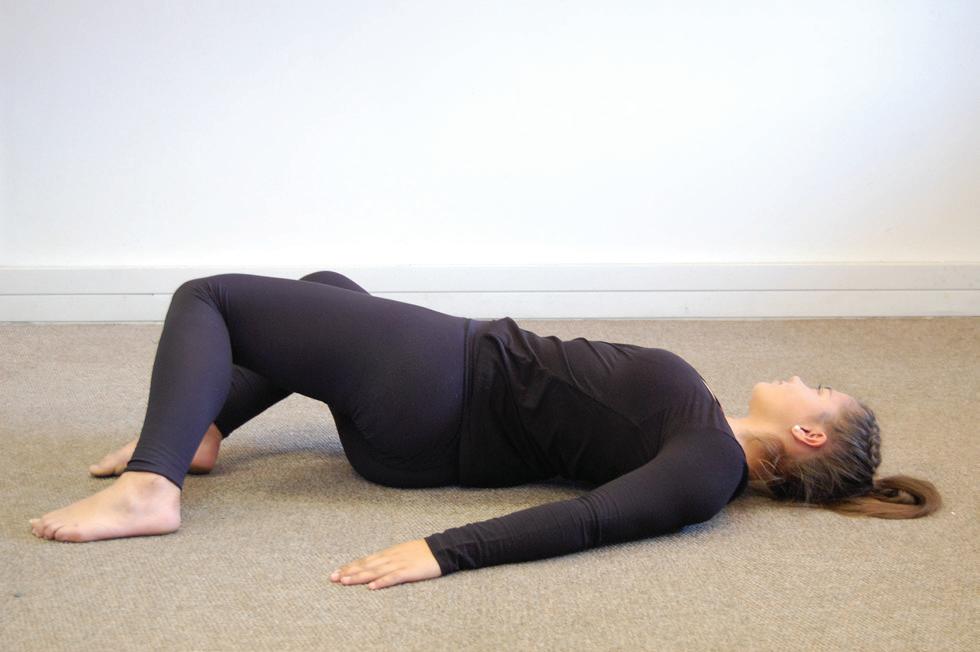
Cool-down exercise 3: Winding down
y Lieonyourbackwithyourkneespulledupandyourfeetflatontheground. y Close your eyes and place your hands on your rib area to feel your breathing. y Slowlyinhaleandholdyourbreathforfiveseconds. y Slowlyexhale,foracountoffiveseconds. y Repeatfivetotentimes. 18
Summary
Actors must always prepare before a performance. They must know the terms and movements, have good spatial awareness and focus. Warm-up exercises for the body and the voice, help actors to mentally and physically prepare. These exercises help to sharpen the senses and ensure the body and voice are ready, to prevent possible injury. The exercises or routines also help to relieve tension and anxiety. Remember to release tension and get rid of built-up energy and stress after a performance.
Assess yourself
Determine how your body and voice reacts to warm-up and cool-down exercises.
y Do a small experiment. y Choose a short monologue or poem and present it to the class, a friend, family members or your facilitator without warming up. y Record your feelings: ష How was the performance? ష Did you make any mistakes? ష How did your body feel after all the excitement? ష Was your breathing relaxed or rapid? ష Also ask your audience for feedback. y On another day, present the same short monologue or poem to the same audience.
However,thistimeyoumustfirstwarmupforatleast15minutes. y Recordyourfeelingsasbefore.Compareyournotesandreflectonwhetherthewarm-up routine made any difference to your delivery, focus, how prepared you were, diction and anxiety.
Solve the challenge
How do I keep my breathing normal during a performance?
Actors must focus on various elements while performing: the performance itself, movements and positioning, various technical elements and remembering their lines. On top of that, they must be aware of and considerate towards fellow performers and the audience.
Breathing should not get in the way of delivering a good performance and actors must be properly prepared in this regard. This makes a warm-up routine essential. Not only will the exercises increase an actor’s concentration, it will also ensure the brain receives enough oxygen to function optimally under stress.

